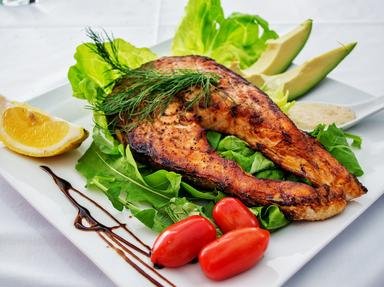Quiz Answer Key and Fun Facts
1. First, in order to know our enemy, we have to learn about its origins. Humans have been eating roasted meat for thousands of years, but the dish we know as the kebab comes from medieval times. Which of these countries is generally held to be the birthplace of the kebab?
2. The kebab appears to be made up of a large block of meat, a substance commonly known as 'doner meat'. Given that kebabs originated in an Islamic country, and that kebab shops across Europe are often halal, which type of meat is least likely to have been used to create it?
3. Perhaps some fruit might sweeten the kebab a little? One of its relatives is a Syrian kebab called kabab bil karaz, which features a certain type of fruit. What is the ingredient of this fruity kebab?
4. Perhaps the mutant kebab can be brought down by pelting it with kofte. Kofte can also be used in kebabs, as well as eaten in curries or as a snack, but what exactly are they?
5. A fan of the British comedy series 'Red Dwarf' says that the mutant kebab reminds him of the vicious shami kebab that attacked Dave Lister in one episode. A shami kebab is, in fact, a real kebab, but from which region does it originate?
6. A challenger appears! In October 2017, the world's biggest doner kebab sandwich is made, weighing in at 423 kg. However, this record breaker is not a native to the Middle East. What country does it come from? (Hint: its capital has even more doner kebab shops than Istanbul!)
7. One person who is not a fan of kebabs, mutant or otherwise, is the French politician Robert Menard. In 2009, he banned new kebab restaurants from opening in the town of Beziers where he was mayor, as he viewed them as a threat to French culture.
8. A Thai restaurant has provided several skewers with which to impale the mutant kebab. These skewers are normally used for satay dishes, which consist of skewered grilled meat in a peanut sauce. Which type of kebab typically consists of pieces of grilled meat on a skewer?
9. A fiery pit has been dug for the kebab to be lured into, as it retreats from the skewers being hurled at it. A Nigerian takeaway owner comments that its meat would make good kilishi, and when you look confused, he goes on to explain that kilishi is a dried version of a type of kebab eaten in Nigeria. What is the name of this particular kebab?
10. The mutant 50ft kebab has been defeated! The local restaurant staff carve it up into chunks, enough to feed a community, and various accompaniments are prepared - everything from hummus to spicy tomato sauce. Which of these salads, also from the Middle East, would be the most likely accompaniment for a kebab?
Source: Author
Kankurette
This quiz was reviewed by FunTrivia editor
Bruyere before going online.
Any errors found in FunTrivia content are routinely corrected through our feedback system.
